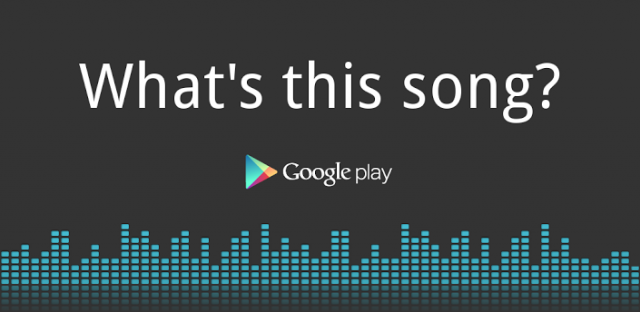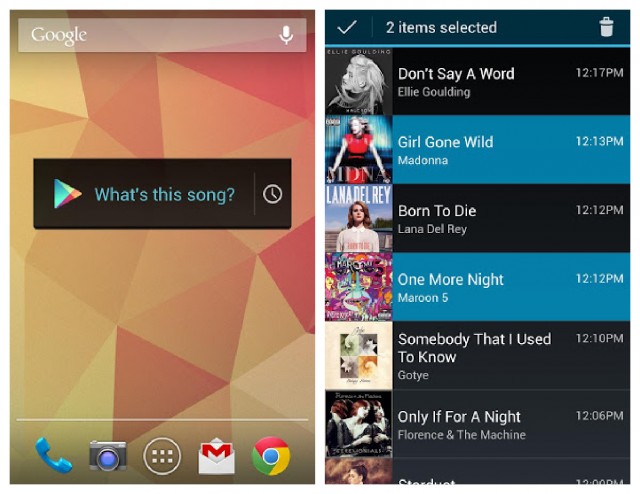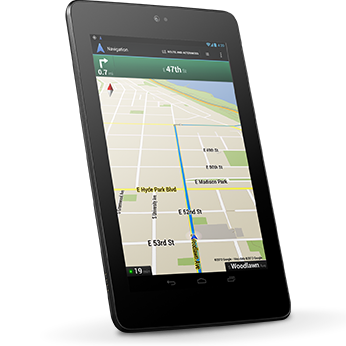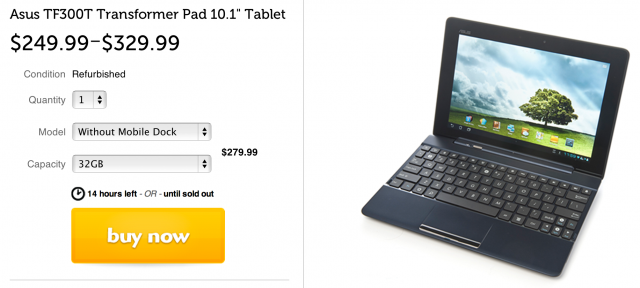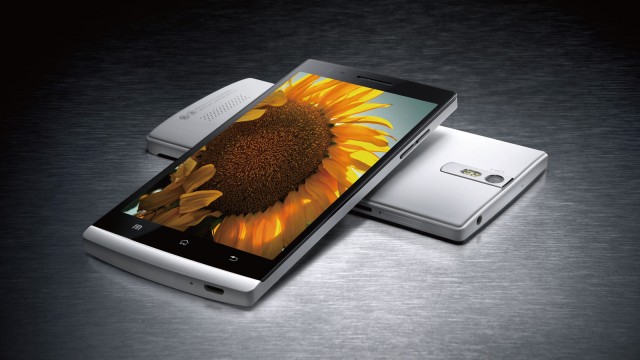Android Authority |
- Expect at least five companies to announce 1080p smartphones in H1 2013
- Google Maps now on the iPhone. Finally!
- Caltech students invent terahertz chip that gives your phone x-ray vision
- Sony releases a new GIF creator called MotionGraph; $0.99 on Google Play
- Google has no plans to support either Windows 8 or Windows Phone
- HTC on the Windows Phone vs Android debate, specs and design DNA
- Kindle Fire for sale to Amazon Moms only
- Samsung Galaxy S3 vs Oppo Find 5 [video]
- Fido may soon carry the Samsung Galaxy S3
- Google winning the Android vs iOS war ‘pretty clearly,’ Eric Schmidt says, but it’s not quite so
| Expect at least five companies to announce 1080p smartphones in H1 2013 Posted: 13 Dec 2012 02:19 AM PST
HTC, we applaud you for being the first company to launch a 1080p smartphone, but be warned, the competition is coming. According to our favorite Taiwanese rumor site DigiTimes, during the first six months of 2013 we’re going to see 1080p handsets from Samsung, Sony, LG, Huawei, and ZTE. Samsung is likely going to use their own 1080p AMOLED screen technology, whereas Sony is going to use LCDs from JDI since they’re one of the three companies that actually make up JDI. LG is said to be making their own 1080p panels, and just yesterday we published a report that said Innolux will begin mass producing 1080p LCDs during the first quarter of next year. This brings up an important question: Should you buy a new smartphone right now? If your device is on the brink of failure, if your screen is broken, or if you hate your phone so much that you want to throw it against the wall every time you pick it up, then it might be a good time to get something new. But if you can wait, just a few months, then you’ll be rewarded with what will undoubtedly be the most impressive looking panel your eyes will have ever seen. Some of you might think that 1080p is overkill and that 720p is just fine. We heard the exact same arguments when 720p phones came out. People said such a high resolution was insane and that 800 x 480 was more than plenty. To those people we have a terse message: progress doesn’t care about your opinion! Who’s going to make the best 1080p phone? That’s a hard question to answer. We’ve already seen the Butterfly/DNA, but rumor has it that it’s going to get refreshed. Then there’s the elephant in the room, Samsung’s Galaxy S IV. Decisions, decisions. Next year is going to be incredible. Related Posts |
| Google Maps now on the iPhone. Finally! Posted: 13 Dec 2012 01:53 AM PST
Any iPhone users out there? You might find this interesting. Google has recently announced the launch of its official Google Maps application for iOS. This comes after Apple opted to ditch Google Maps in favor of its own Maps application when it released iOS 6 along with the iPhone 5. This also comes after three months of ridicule, finding of alternatives, fired executives and managers, and lost travelers in Australia (just this week!). Reworked app. Google says they have reworked the iOS from ground up, and is not simply an HTML5 wrapper, like some of the previous Google apps on the iOS platform (like the old Gmail). As such, expect Maps to be faster, smoother, and more functional than before. While iOS users found the mobile web version of Google Maps to be a temporary replacement before, the new native app should be miles ahead in terms of performance. Case in point: it uses vector graphics, which should both increase speed and reduce data usage compared with raster images. Revamped interface. The interface has been drastically revamped, and is now more minimalistic than ever. Users are greeted with a search box at the top. Additional features can be accessed by pulling out a tab from the bottom right or swiping left with two fingers. The new app features turn-by-turn navigation, transit assistance, as well as traffic conditions in supported regions. API access for developers. Apart from the app itself, Google is offering developers access to the Maps app through two sets of APIs, which will enable developers to access Google Maps from within their own apps instead of the stock iOS 6 map application. As such, we can expect Google’s own iOS apps to use Google Maps in the future. Users who don’t have Google Maps installed will be brought to the App Store when the API call is accessed from within a third-party app. Design plus data. As The Verge‘s Dieter Bohn puts it, design and data ultimately set Google Maps as the clear winner over Apple’s own mapping iteration. “Google has taken everything it has learned about app design and performance in the past year and baked it into Maps.” This applies to both iOS and Android. No iPad app for now. Sadly for iPad users, you folks will have to wait a bit longer, as this release is exclusively for iPhone and iPod Touch 4th gen users for now (requires iOS 5.1 and up). It seems Google has made good on its promise to have Maps available before the year ends. Now it’s a question of whether Apple will be able to bake in their improvements to Apple Maps to compete with Google’s own offering. Now what’s interesting here is that mapping will no longer be a differentiator for Android manufacturers. The previous lack of a Google Maps app would be a deal breaker for users choosing between the iPhone 5 and an Android smartphone. But now, both Android and iPhone users can now enjoy the same benefit from Google’s in-house map offering. Have you checked out Google Maps for iOS 6 lately? Related Posts |
| Caltech students invent terahertz chip that gives your phone x-ray vision Posted: 13 Dec 2012 01:14 AM PST
Students at the California Institute of Technology have invented a new chip that spits out terahertz waves at a rate of roughly 300 times per second. What does that mean for consumers? In the not too distant future, you’ll be able to buy a phone with a camera that can see through certain materials. Our headline says “x-ray vision”, but that’s a bit misleading. An x-ray is defined as a wavelength that measures between 0.01 nanometers and 10 nanometers in length. Terahertz waves on the other hand, they’re between 1 millimeter and 0.1 millimeters. What are the practical uses of such waves? The students say you’ll be able to take a picture of a piece of chicken you’re eating and get an accurate measurement of how much fat is contains. Your phone will also be able to identify drugs, explosives, and weapons hidden inside everyday object. That might not sound too compelling, but then again the internet was invented so universities could easily exchange research papers. Today we have 1080p video streaming, Skype calls, and more social networks than we care to count. When will this technology realistically reach mobile phones? This writer used to work in a research lab and is all too familiar with the painful transition that academic research needs to go through to end up in the private sector. He’d say at least half a decade, probably a full decade just to be on the safe side. In the television show Star Trek the members onboard the space traveling vessel had devices that they could point at pretty much damn near everything and get a detailed profile of what it is they were looking at. The research that these students have published brings us one step closer to that reality. Related Posts |
| Sony releases a new GIF creator called MotionGraph; $0.99 on Google Play Posted: 13 Dec 2012 12:29 AM PST
There’s a division within Sony called “Sony Digital Network Applications”. Today they released an application called “MotionGraph” that lets you easily create animated GIF files. Here’s how it works: You record a brief video, trim it down, and then use your finger to select which parts within the video actually move. The rest of the video stays static. If that description was too confusing, then just watch the video below: Now normally companies create software that they put on their devices and their devices alone in an attempt to drive sales. You don’t see Samsung offering S-Calendar on the Google Play Store, and you definitely don’t see HTC offering their Sense UI widgets on there either. But Sony is taking a different approach, one that we’re happy to see. They’ve decided to let anyone download their application, though they are asking people to pay $0.99. We don’t think that’s a lot of money. And in case you’re wondering, no, MotionGraph isn’t the first animated GIF creator. Nokia released almost the exact same application for Windows Phone 8 earlier this month. They call it “Cinemagraph”. You can obviously see who inspired who here. But back to Sony’s business model, we hope more companies learn how to share. The iPod became popular when Apple decided to offer their music management application iTunes on Windows computers. Android is popular because Google lets anyone build Android phones. We know handset makers like to make their devices stand out, but we feel they should do that by improving their hardware design and picking the right components. Writing good software is hard, so why would a company who is in the business of manufacturing AMOLED panels be good at it? Exactly. Related Posts |
| Google has no plans to support either Windows 8 or Windows Phone Posted: 12 Dec 2012 11:26 PM PST
Anyone remember the late 90s and early 00s, when Apple was just starting to get their groove back, but PC users made fun of the company because all the cool and interesting apps were on Windows? The same thing is happening today, but with Microsoft. Windows 8 is confusing everyone, Windows Phone sales are negligible, and all that makes developers question why they should bother supporting Microsoft’s platforms when it’s clear that Android and iOS are the future. Clay Bavor (pictured above), the Director of Product Management for Google’s Apps, recently gave an interview to the UK site V3. When he was asked about making the company’s apps available on Windows, he said:
That’s the most brutal statement Google can make because it sends a signal to the entire industry that Microsoft’s operating systems are worthless. You have to remember, Google is a services company. It’s in their interest to make sure their services are accessible on every platform under the sun. For them to shun Windows Phone, and more importantly Windows 8, is tantamount to the kiss of death. Can Microsoft turn things around? Of course they can. They’re a company that doesn’t give up. The first XBOX was such a terrible product, but the second generation, the XBOX 360, is widely heralded as being one of the best consoles to ever come out. Windows Vista was complete garbage, but then Windows 7 proved that Microsoft knew how to make a good desktop OS. Sure, Windows 8 may be a bit rough around the edges, and Windows Phone 8 might be a little incomplete, but there’s always the future to look forward to. And who knows what Android 5.0 or 6.0 will be like by then! Related Posts |
| HTC on the Windows Phone vs Android debate, specs and design DNA Posted: 12 Dec 2012 07:36 PM PST  “We’re very proud of HTC Sense …” After difficulties in the market for a year or so, HTC seems to be back on track. But it’s not all Android goodness that’s keeping HTC afloat these days, with the company’s partnership with Microsoft for the flagship Windows Phone 8 devices, as well as HTC’s cross-licensing agreement with Apple. Of course, there’s the flagship HTC Butterfly that’s keeping Android fans excited. But going beyond specific devices like the Butterfly and the 8X, what’s going in the collective minds of HTC’s executives when they plan out smartphone (and tablet) designs, business strategies and corporate alliances? Jeff Blagdon of The Verge recently had a sit-down with HTC’s chief product officer Kouji Kodera to have a peek at how HTC is keeping the two platforms — Android and Windows Phone 8 — in balance. Here are a few highlights. Does the HTC 8X borrow from the Nokia “school of design?” Kodera seems to be aware of the perception that HTC is borrowing from Nokia in terms of their handset designs for Windows Phone. Conveniently, he carries a Lumia 920 around, just to prove a point. And it’s this: much like the fashion industry, the mobile industry will usually follow a certain design DNA, or a few concepts from a common source. In fashion, designs, colors and trends are often decided years in advance (because the industry has to source materials and produce components). It’s similar in the mobile industry, to some extent. This is especially true in the case of both Nokia and HTC, with both companies having worked closely with Microsoft. But when queried on just how much influence Microsoft exerted on HTC’s design, the answer was “zero.” On stock Android interface. HTC is one of those mobile companies that have popularized their own skin as their own “brand” across different platforms. HTC Sense is here to stay, Kodera says. “[I]n general, we're very proud of HTC Sense, and we'd like to continue shipping it on every device.” Those who prefer the vanilla Android look and feel are likely to be disappointed. Less is more. Samsung seems to be the one company that has profited from selling a broad product line — from low-end to top-ranging device. But not everyone can make a big difference, especially if you’re not selling tens of millions of devices. For HTC, the less number of models sold, the greater exposure for each. According to Kodera, the company prefers to have a small product line to ensure “some real differentiated factors to the market, rather than just bringing many new products.” Now this might have an implication on HTC’s relationship with carriers, who seem to prefer having a wide product line as possible. But Kodera says carriers are changing, in terms of seeing “different success models.” T-Mobile’s switch to “Value” plans, for instance, is one example I can point out. On Microsoft’s marketing muscle. Windows Phone 8 is not exactly free, and nominally costs more than Android to license. But Kodera says HTC is looking at its partnership with Microsoft in terms of value. Sure, Android is free, although manufacturers pay royalties to certain software patent owners. “While it's true that Windows Phone has a license fee and that the core Android OS is free, once you add software your license fees go up accordingly,” says Kodera. Additionally, Microsoft is actually active in promoting and advertising their platform. “The biggest difference is that Google doesn't do any advertising for Android, while Microsoft pays to promote Windows Phone on its own,” adds Kodera. He explains that HTC is playing on the strength of the product and “whether or not people will buy them.” On tablets. Kodera says HTC has experimented with tablets, and the company is still “interested.” HTC has made a lot of concepts — some of which actually ended up as failures in the market. At this point, the product chief says the company will continue focusing on development and building a product that works. “[W]e will re-do it as many times as we need until we get a concept and a product that we feel comfortable with.” On specs and screen sizes. Smartphones are becoming bigger and bigger, but design seems to have hit the ceiling of 5-inches without sacrificing usability and practicality. Still, it does not mean that screen specs will stagnate. “[P]ixel density is going to keep going up,” says Kodera. It’s a matter of time. What do you think of HTC’s views on the smartphone industry and development? Will they be able to rise up from the ashes and eventually get out of the doldrums in the next year or so? Related Posts |
| Kindle Fire for sale to Amazon Moms only Posted: 12 Dec 2012 02:34 PM PST
Amazon recently offered a $50 off on the Kindle Fire HD Tablet sale but the deal has expired. Now, Amazon is offering a similar promotion to all Amazon Prime and Amazon Moms members. This gives you a great excuse to go out and try the Kindle Fire just in time for Christmas! Savings are as follows:
If you've been looking for the opportunity to purchase a Kindle Fire but you missed out on the original deal for the 8.9-inch HD model, then this is your next and maybe even last chance to pick one up for Christmas. The Kindle Fire is a good entry-level device for those who are interested in purchasing a tablet this holiday season, but don't want to spend a lot of money up front. The Kindle Fire HD 8.9 sports a 1.5GHz dual-core processor, 1GB of RAM, and options for either 16 or 32GB of storage. Plenty of power for the price! So hurry before they run out of the inventory! Related Posts |
| Samsung Galaxy S3 vs Oppo Find 5 [video] Posted: 12 Dec 2012 02:11 PM PST
When it comes to Android smartphone comparisons, this particular matchup is definitely one of the strangest you'll encounter. In one corner we have the best-selling Android smartphone of all time (particularly noteworthy given the impressive market share that the OS holds in the market): the Samsung Galaxy S3. Launched back in May in Europe and June in the U.S., the third incarnation of the Galaxy S series is the landmark Android smartphone for 2012. An impossible but otherwise very interesting study would reveal by how much did the legal dispute between the South Korean manufacturer and U.S.-based Apple, a stage where the Galaxy S3 has avoided negative decisions thus far, improve Galaxy S3 sales. But that's part of another story, one that's contrastingly that much better known to our regular readers. In the other corner, we have the Oppo Find 5, an Android smartphone that, when officially announced by the ambitious Chinese manufacturer has captured the tech blogosphere center of attention thanks to a set of very impressive technical specs. Although the Oppo Find 5 is currently available only in China, the device might make it to Western markets as well. However, even if the Oppo Find 5 doesn’t hit other countries, readers from various parts of the world can use this vs piece as a tool for creating a better picture of the grand scheme of the mobile technology world. After all, China recently became the largest Android market of them all! Specs
DisplayThe Samsung Galaxy S3 features a 4.8-inch Super AMOLED display running at a 720p resolution. Unfortunately, the S3 cheats when it comes to its 306 PPI (Pixel Per Inch) density, as it does not use a regular RGB matrix, but a PenTile arrangement instead.
Just to make sure the elephant in this section is noticed, the Samsung Galaxy S3 doesn't have a display that impresses when compared to more recent flagship smartphones, and the PenTile technology might just be the reason. For example, Samsung's other best seller, the 5.5-inch display on the Galaxy Note 2 outshines the panel on the Galaxy S3 in picture quality. On the other hand, the Oppo Find 5 is chronologically the second Android smartphone to offer an interesting generation of displays, the intensely debated 5-inch 1080p type. HTC was the first manufacturer to go down the 440 PPI path with the HTC J Butterfly / Droid DNA.
In fact, the Super LCD 3 displays featured by the HTC J Butterfly / Droid DNA and the Oppo Find 5 actually come from the same manufacturers, meaning that the picture quality is, for all accounts and purposes, equally impressive. Verdict: the Oppo Find 5 has a better display than the Samsung Galaxy S3. Design and Build QualityThe Samsung Galaxy S3 is not a bad looking piece of Android hardware, but it is reasonably safe to assume that it will not win the 2012 Design Awards. The Galaxy S3 measures 136.6 x 70.6 x 8.6 mm (5.38 x 2.78 x 0.34 in) and weighs 133 grams.
Darcy LaCouvee and his insanely popular drop tests have proven that Samsung's best selling smartphone does not fare well on impact against rough surfaces. In the Chinese corner, the Oppo Find 5 is noticeably wider and taller than the Galaxy S3 thanks to its larger display, and just a hair thicker. The overall design does not impress, and although no unit has been dropped (mercilessly might I add) on hard concrete yet, it is hard to believe that resistance to impact will be one if this smartphone's stronger qualities.
Verdict: As there are no major differences in build quality, this section should be decided by your personal prefference Internal HardwareCPU, GPU & RAMAlthough the Oppo Find 5 was the first smartphone announced to use the new Qualcomm Snapdragon S4 Pro SoC, the exact same 1.5GHz quad-core Krait CPU – Adreno 320 GPU has since reached the market under the hood of the LG Optimus G, the LG Google Nexus 4 and the HTC J Butterfly / Droid DNA. Thanks to the Snapdragon S4 Pro, Oppo Find 5 is very responsive, although some strain on the GPU should be expected when running graphically intensive games on its 1080p display. According to benchmarks, the Oppo Find 5 performs right on par with the Droid DNA. Here is how the Oppo Find 5 performs in the AnTuTu benchmark:
The International version of the Samsung Galaxy S3 uses Samsung's highly successful Exynos 4 Quad platform, one that joins together a 1.4GHz quad-core A9 CPU with a Mali 400 MP GPU, while the US, LTE-enabled version uses the now previous top of the line SoC from Qualcomm back from roughly six months ago, the Snapdragon S4. Although the international version of the Samsung Galaxy S3 is still a very powerful smartphone, especially at the CPU level (and noticeably faster than the U.S. version), the Snapdragon S4 Pro SoC is the next best thing in the smartphone world. The U.S. version of the Galaxy S3 features 2GB of RAM, while the international version carries half that amount, "just" 1 GB. This is how the Oppo Find 5 fares against other top-end smartphones (the Galaxy S3 included) in the popular AnTuTu benchmark:
Just to put things in perspective, Samsung's reaction to the S4 Pro is called the Exynos 5 Dual and has already reached the end-market under the hood of the Samsung Google Nexus 10 and the Samsung Google Chromebook. So far, benchmarks show that Samsung has another winner. Internal and Expandable StorageThe Galaxy S3 comes in 16GB / 32GB / 64GB versions and can work with MicroSD cards up to 64GB of size. The Galaxy S3 has a serious advantage over the Oppo Find 5, which comes only in a 16GB version, with external card support. CamerasThe Samsung Galaxy S3 has an 8MP sensor in the front and a 1.9MP front facing camera. In the other corner, the Oppo Find 5 has a primary camera that takes pictures of 13MP in resolution, and a 2MP secondary camera. Theory, as well as experience, tells us that we shouldn't expect a major improvement in picture quality with the 13MP sensor on the Oppo Find 5. However, both take decent point-and-shoot-then-Instagram pictures. Although the standard photo quality is not by too many degrees better than what you get with the Samsung Galaxy S3, the Oppo Find 5 camera can shoot video at 120 fps (frames per second), meaning that one can take blur-less ultra slow motion videos. In addition, the Oppo Find 5 primary camera can work in HDR (high dynamic range) mode, a first on smartphone cameras. BatteryThe Samsung Galaxy S3 comes equipped with a removable 2100mAh battery that provides decent battery life intervals at moderate usage, while the Oppo Find 5 has a non-removable 2500mAh battery. If Oppo has managed not to optimize the Find 5 worse than the HTC J Butterfly, we should be looking at decent battery life intervals with the Chinese-bound Android smartphone as well. Verdict: The Oppo Find 5 comes with a faster SoC and roughly all around better specs Android Version & Software TweaksFirst and foremost, Oppo can be congratulated on its decision to keep the custom UI as low profile as possible. Here a quick peek of the home screen:
However, despite the fact that both our contenders run an Android Jelly Bean version (the Samsung Galaxy S3 was launched with Android 4.0 Ice Cream Sandwich but has been since updated – in most markets – to Jelly Bean), this a place where the Samsung Galaxy S3 shines. Although TouchWiz (Samsung’s custom UI) has received plenty of negative feedback, it looks like Samsung has satisfied its fan base via a unique set of software functions, called Smart Functions. We’ve discussed them into further detail in the previous article here, but some of the critically acclaimed tweaks include Smart Stay (a tweak that ensures the display stays on as long as you look at it) and S Beam (an NFC file sharing function between Galaxy S3 / Galaxy Note 2 smartphones). Furthermore, with the release of the Samsung Premium Suite for the Galaxy S3, the reference smartphone for 2012 has gained a whole new range of useful functions such as enhanced Facebook integration, an S3 compatible version of the True Multitasking feature as it can be seen on the Samsung Galaxy Note 2, and others. Here is a video showcasing the Premium Suite for Galaxy S3: Verdict: Although both smartphones run Android 4.1.x Jelly Bean, the Samsung Galaxy S3 comes with a unique suite of software functions that enhance the entire Android experience! ConclusionAs one can notice, the Oppo Find 5 completely dominates the Samsung Galaxy S3 in a vast majority of the sections we have approached. While this loss does not make the Galaxy S3 a poor smartphone, one thing it does point out is that the Android ecosystem is evolving at an ever increasing pace. If a relatively unknown manufacturer (even on the Chinese market) such as Oppo can release a smartphone that clearly kicks the behind of the best selling Android smartphone ever, and all that in roughly 6 months since the latter was released, can you imagine what the big boys can do in 2013? What are your thoughts on this interesting battle? Is Oppo to be congratulated for the Oppo Find 5? We think so, but feel free to disagree with us via the comment section below! Related Posts |
| Fido may soon carry the Samsung Galaxy S3 Posted: 12 Dec 2012 01:48 PM PST
Looking to get the Samsung Galaxy S3 in Canada? If you have Fido as your carrier, you’ve probably noticed that this isn’t an option. The good news is that this situation might be changing soon. The news comes from a leaked image received by Mobile Syrup, which shows a Fido nameplate for the S3:
Interestingly enough, the nameplate suggests that the flagship Samsung smartphone will ship with ICS not Jelly Bean. While not the end of the world, that means you won’t get Google Now and other Jelly Bean features right out of the box. Luckily, all you’ll need to do is perform a simple update. So when is the Samsung Galaxy S3 coming? It is hard to say for sure, but hopefully sooner rather than later. That said, with the nameplate being the only evidence that the S3 is even coming, I’d take this all with a grain of salt for now. Would you pick up the Galaxy S3 through Fido if this rumor proves true? Related Posts |
| Google winning the Android vs iOS war ‘pretty clearly,’ Eric Schmidt says, but it’s not quite so Posted: 12 Dec 2012 01:19 PM PST
In an interview with Bloomberg, Google's former CEO and current chairman Eric Schmidt talked about the company's Android mobile operating system especially in comparison with its main competitor, Apple's iOS, a rival that Google is apparently "clearly" beating. Sure, Android has the lion's share of the overall smartphone market when it comes to device activations – which are still at 1.3 million per day – but does this mean everyone else is losing the battle, especially Apple? Under normal conditions, we'd take Schmidt's statements as regular top exec talk, but considering that the former CEO did make some pretty controversial similar commentaries in the recent past regarding Google products, Android included, let's dismantle the bullshit from his current statements. What Schmidt said…Talking to Bloomberg, he basically said that Google is crushing Apple in the smartphone business in a similar manner Microsoft did with the same competitor in the PC business 20 years ago:
According to Schmidt, Android is winning "clearly" even if Google had to make some sacrifices when it comes to some aspects of the overall ecosystem. But is Google really winning the battle? Is Apple about to surrender the mobile business to Google? What about the other players? While we cover everything Android-related here, I don't think we have reached a point in this continuously evolving mobile environment where we can say that Android has won and iOS, Windows Phone, BlackBerry, and other competing mobile operating systems were defeated.
Removing the bullshit…Yes, Android is winning when it comes to overall market share, but it's winning in a competition where Apple is not really an active player. Google’s mobile business strategyGoogle went into the mobile business with one clear goal in mind (among other objectives): to setup the playground for the future. Realizing that the future of computing will not contain "heavy" machinery like desktops and laptops, Google skated to where the puck was going when it comes to Internet browsing and Internet consumption – heavy smartphone and tablet use – to make sure its Search business, or the only way Google is making money right now, will still be making money when the hordes of Internet users will choose portable devices to get their web browsing fix. Google had to make sure it has a foot in the door in the "post-PC" world, and that it's one step ahead of its competitors when it comes to mobile search, considering what mobile search will mean for its bottom line. There's nothing wrong with that, and you can't blame Google for doing whatever it can to stay ahead of its Search rivals. That's why Google had to make its mobile OS open source so that OEMs will be able to easily adopt it, modify it and build interesting devices around it, from low- to high-end, so that any potential buyer could afford one such smart device and use it, among other things, to browse the web, click on ads, make money for Google. And Google isn't making any money off of Android sales – or better said, it's yet to make any serious money considering that its most recent devices are sold at cost – but Schmidt isn't saying anything about that. And then there's the Motorola $12.5 billion purchase, which is yet to offer Google any advantages in the mobile business, whether we're talking about patent wars or Android device sales. We're not even going to go in Motorola Nexus handsets and tablets on this ones. Apple’s mobile business strategyApple, on the other hand, has a different business model. The company is first a hardware company that also builds its own software for the devices it makes, smartphones and tablets included. Apple wants to make money off of device sales, and its iPhone and iPad are currently its best-selling products, devices that are responsible for a large chunk of its revenue, and devices that did not exist 5 years ago – whereas Google's Search is rather old. Therefore, Apple is not competing in the mobile market share game, which Google is winning clearly, but in the profit share game, which Apple is winning clearly. And where Samsung is also winning clearly, at least compared to Google. In simpler terms, the battle is not over by a long shot mainly because Google has the market share, and Apple has the billions. The former can further cement its lead and turn Android users into faithful followers, while the latter has all the money in the world to create whatever products it wants and even contest Google's strong overall mobile market share. Imagine only what a Nexus-like cheap iPhone would do to that market share in case Apple decides to go that way. But we'll cross that bridge when we get there.
The Google-Microsoft comparison…Microsoft is clearly – no pun intended – one of the tech giants of our recent past, present and upcoming future, but maybe Google should steer away from comparing Android to Windows. Because Microsoft is having a tougher time adapting to the “post-PC” era, some 20 years after it emerged victorious over Apple. Google doesn’t want to follow in Microsoft’s footsteps, does it? This is not to say that Microsoft is in a bad place right now, only that it failed to live up to our expectations in recent years when it comes to smart mobile devices. Getting back to the Microsoft vs Apple element, we’ll remind you that Windows was not open source and wasn’t offered free of charge like Android. Microsoft wanted to make money off of its computer OS and the accompanying software it created for PC use – just like Apple wants with its hardware/software bundle. And Microsoft did not create Windows as a means to deliver an advantage in a future battle – mobile search in Google’s case with Android – but as a cheaper alternative to Apple's computer and OS. Microsoft's OEMs partners and/or customers had to buy Windows, and other software made for the OS, and the more people joined in the fun, the higher the profits and market share for Microsoft. At the same time, Apple did not manage to remain competitive, and lost market share to Bill Gates & Co. But at the time it was losing the market share battle Apple didn't have the same cash reserves it has now either. Hence, it was losing the profits battle also. Apple was nearing bankruptcy and it took several years for the company to get back into shape, so it couldn't really stop the Microsoft expansion. Whereas now it can just fight Google for quite a few more years before approaching bankruptcy, because those billions in the bank can always be invested in more R&D and new products. And then Microsoft must have taken everything for granted, failing to foresee that the next battle that needed to be fought was in mobile. "Clearly winning" and end-users…From a different point of view, we don't want any mobile OS to come out as the clear winner – which, in this writer's view would mean having a firm grip on profits and market share. Because once we get there, competition will dwindle, and without proper competition, we can't have innovation and even better products. We don't want a single company to be the ultimate provider of a certain service or products. We want choice, competition and better products. That can't really happen once one company would be in a "clearly winning" position. Microsoft was almost there in the PC business, but it failed to eliminate rivals and look into the future. On the same note, if we were to look only at the Android ecosystem, we'd find Samsung in such a position. The South Korean giant is selling the most Android handsets and is making most of the profits. And those numbers are growing quarter after quarter. That's definitely laudable when looking at Samsung alone, but not necessarily good for Android. Rivals like HTC, LG, Google (Motorola) and others really need to step it up and steal both market share and profits from Samsung, so that never along the road, will Android be confound with Samsung. Other Schmidt statements…Finally, and the main reason we’re taking Schmidt’s recent statements with a grain of salt is the fact that this isn't the first time Google's former CEO comes out with such talk that can turn against him later down the road. He did say a few years back that the Nexus One was a one time thing for the company, but we all know what followed soon after that: the Nexus S, or the second Nexus handset. Then came the Galaxy Nexus and now we're looking at the fourth Nexus-branded smartphone, the Nexus 4 and hopefully not the last.
About a year ago he did say that Android Ice Cream Sandwich will become the OS of choice for developers instead of iOS. That did not happen, and ICS is yet to get the main slice of the Android pie. Then he prophesized that Google TV will be one of the main players in the TV business, with the majority of TV owners having it on their TVs by mid-2012. Google TV is still a product that's yet to find its way, and while we don't have exact numbers for Google TV deployment at this time, it's clearly not where Google would like it to be. So when he says now that Google is clearly winning the battle with Apple in a Microsoft-like fashion, let's doubt it for now, as the battle is far from over. What’s happening though is that Android devices are overall selling better than the iPhone. But since not all Android OEMs are profiting from the Android revolution, market share alone is not enough to win the battle. Related Posts |
| You are subscribed to email updates from Android Authority To stop receiving these emails, you may unsubscribe now. | Email delivery powered by Google |
| Google Inc., 20 West Kinzie, Chicago IL USA 60610 | |























